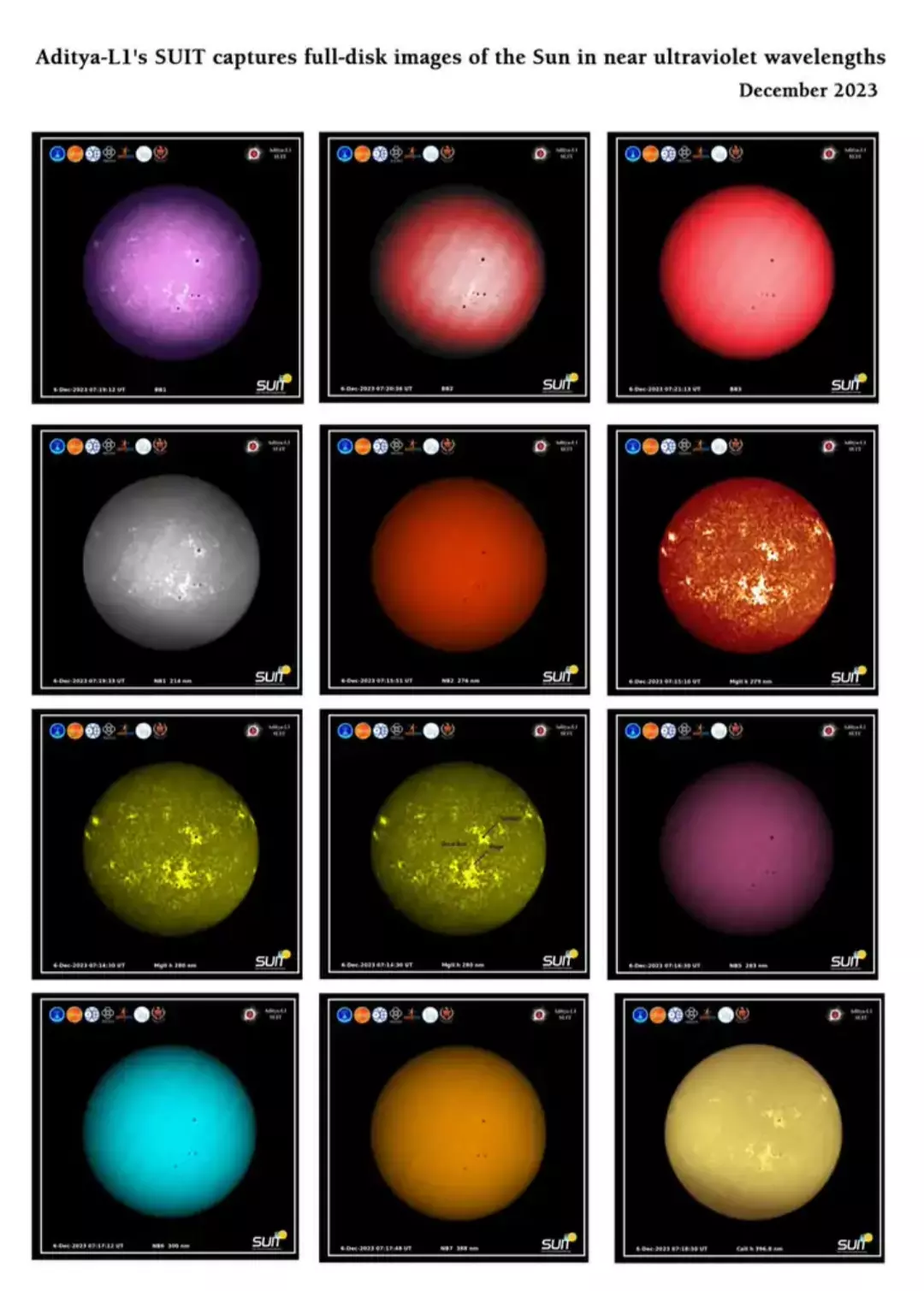Aditya-L1's SUIT Unveils Solar Secrets in Spectacular Full-Disk Images

In a groundbreaking achievement, the Solar Ultraviolet Imaging Telescope (SUIT) aboard the Aditya-L1 spacecraft has captured the Sun in unprecedented detail within the 200-400 nm wavelength range. The SUIT instrument, designed to observe the Sun's photosphere and chromosphere, powered on its payload on November 20, 2023, initiating a remarkable exploration.
Following a successful pre-commissioning phase, SUIT unveiled its first light science images on December 6, 2023. These historic images, obtained through eleven distinct filters, showcase the Sun's full disk in wavelengths from 200 to 400 nm (excluding Ca II h). Notably, the Ca II h wavelength has been extensively studied by other observatories.
Among the revealed features in the images are sunspots, plage, and quiet Sun regions, marked vividly in the Mg II h image. Scientists now have access to unprecedented insights into the intricacies of the Sun's photosphere and chromosphere, setting the stage for a deeper understanding of solar dynamics.
The SUIT observations are poised to play a crucial role in unraveling the dynamic coupling of the magnetized solar atmosphere. Furthermore, these findings will assist scientists in refining their understanding of how solar radiation impacts Earth's climate, providing valuable data for climate research.
This monumental achievement is the result of a collaborative effort led by the Inter-University Centre for Astronomy and Astrophysics (IUCAA), Pune. Partners in this scientific endeavor include ISRO, the Manipal Academy of Higher Education (MAHE), the Centre for Excellence in Space Science Indian (CESSI) at IISER-Kolkata, the Indian Institute of Astrophysics Bengaluru, the Udaipur Solar Observatory (USO-PRL), and Tezpur University Assam. The synergy of these institutions has paved the way for a new era of solar exploration, with Aditya-L1's SUIT at the forefront of unraveling the Sun's mysteries.
